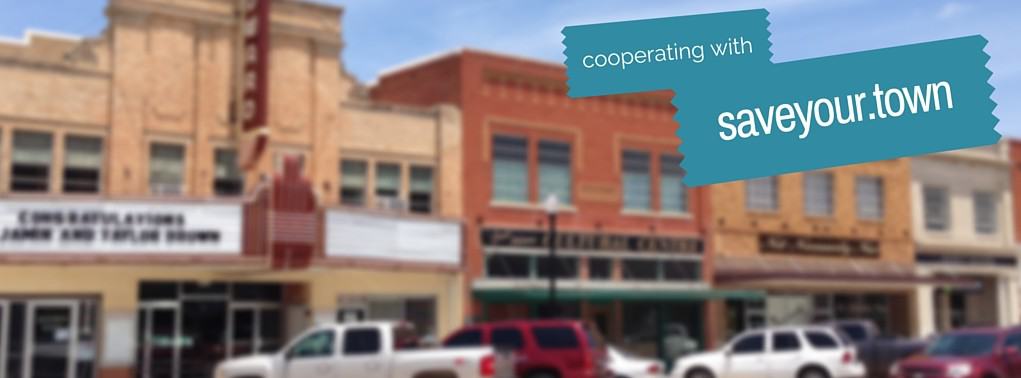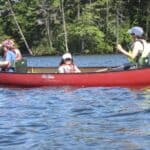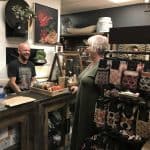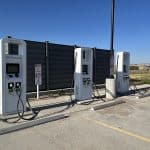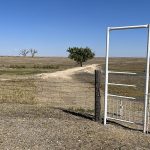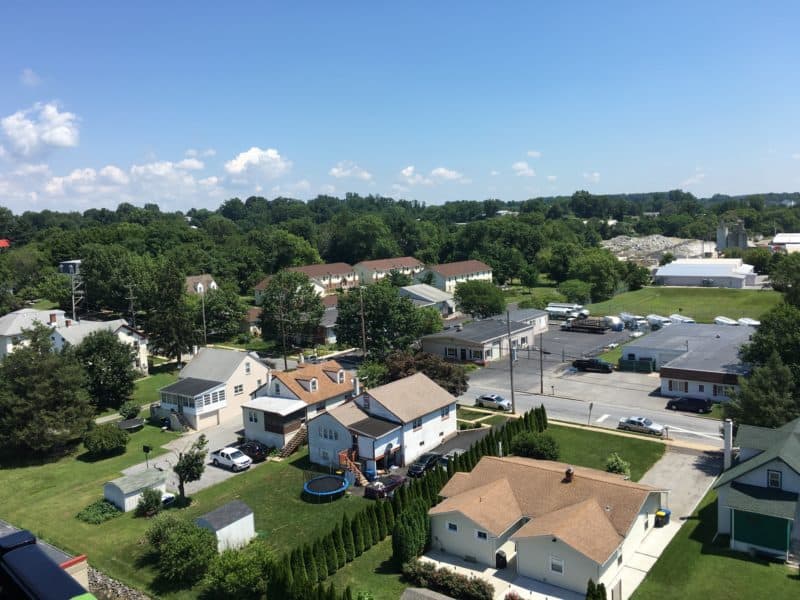
Looking down on Kennett Township, PA, from the fire truck bucket. What if a disaster happened here? What would be the best plan while rebuilding?
Note: This week and next week, I’m pleased to share these guest posts by Whitney Hoffman. She’s sharing some thoughts about being ready for and recovering from disasters. -Becky
Guest post by Whitney Hoffman
I’ve been a Township Supervisor in Kennett Township PA for over three years now. We’re located in what some people call an ex-urban area, where suburban and rural meet. We’re known as the Mushroom Capital of the World. Mushroom farms, most family owned, make a $2.5 billion impact on the economy throughout the area.
Our town, Kennett Square, and the surrounding area including our Township have the same problems many small towns all over the country have. How do we keep our town center vibrant, and how do we make sure there are attractive jobs available so our kids have something to come home to after they are grown and go off to school.
It doesn’t take long as a local elected official to learn about the importance of zoning and building codes to shape how businesses thrive or die, and how important having good infrastructure is to the success of your community.
That’s why looking at the devastation of small towns in the latest disasters hit home hard for me. While the emergency responders take care of the initial needs after a storm, the long term responsibility weighs on the people who sit on city councils, planning commissions and zoning hearing boards. The decisions they make about how land is going to be used, reused and what kind of construction will be allowed will affect how their community comes back, and how vulnerable it may be (or not) in future storms.
For example, in our town, we have a number of areas that were zoned for commercial office parks. That’s simply something people don’t need as much of any more, so the question becomes what do you do with old office parks as they gradually empty out, or how to you attract development to undeveloped parcels in that area, that are more reflective of the needs of the community?
Traditionally, the local zoning was for “single use” – businesses went in one section of town, housing in another. But now, people want more livable, walkable communities. That’s why we’ve spent a tremendous amount of time and effort to try to create new code that allows for “Traditional Neighborhood designs”. This means mixed use on a parcel, allowing commercial use with live/work unit apartments above, townhomes and even single family homes, all on the same parcel, even if it’s only about 10 acres.
And it means creating some rules that might even fast-track approvals. So for example, if you want to avoid a lengthy conditional use process, plans to develop a parcel that meets a specific set of criteria, including environmentally friendly aspects like green roofing, LEED certified buildings, water-table friendly stormwater management, etc., get advantages in the approval process.
When I look at the devastation after disasters, as a local official, I feel for everyone in the affected area. But I also see that the elected officials and planning commissions have a unique opportunity to remake and reshape their towns. They can start over, and reshape their town with new codes to make things better than ever. They have an opportunity to look at their community and build something that really works. Maybe that’s adding bike lanes while you are redoing streetscapes. Maybe it’s adding trails and other ways to get around rather than depending only on cars and highways. The key is not to let the temptation of rebuilding it “just like it was” prevent you from designing something better and something that has a longer lifespan.
It’s going to be tough to design the town you want and put in place building codes that ensure the longevity and resilience to any future storms. But it is a once in a lifetime opportunity to make a mark on the town and design it the way we wish we could. Make it a place people are eager to call home for generations, whether they are returning or decide it’s the perfect new place to put down roots.
You have more of a blank canvas than many people ever get. Make great decisions now. Your community will thank you for generations to come.
More about Whitney
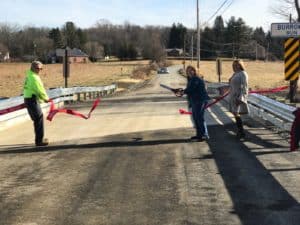 I was sworn in as a Kennett Township Supervisor in January 2016, and now serve as Vice Chair of the Board as of January 3, 2017. I am the first elected female Supervisor in the history of the Township.
I was sworn in as a Kennett Township Supervisor in January 2016, and now serve as Vice Chair of the Board as of January 3, 2017. I am the first elected female Supervisor in the history of the Township.
I am currently working as a social media manager for Mingl Marketing and its sister company, Comfort Media Group in Philadelphia, and I also consult as a digital marketing strategist for Epic Marketing in Delaware on a project by project basis.
My consulting business, Hoffman Digital Media, specializes in digital media strategy, content marketing, and management for the web. I work with businesses and organizations to help them hone and develop a social media and 360 degree marketing strategy, ensuring that they can target potential customers online as well as measure the return on investment of marketing dollars. I speak regularly to businesses and community organizations on social media, content strategy, business strategy, technology and digital citizenship issues to groups of all sizes.
Read Whitney’s second post, How small towns can cut through the noise to communicate with residents during disasters
New to SmallBizSurvival.com? Take the Guided Tour. Like what you see? Get our updates.
